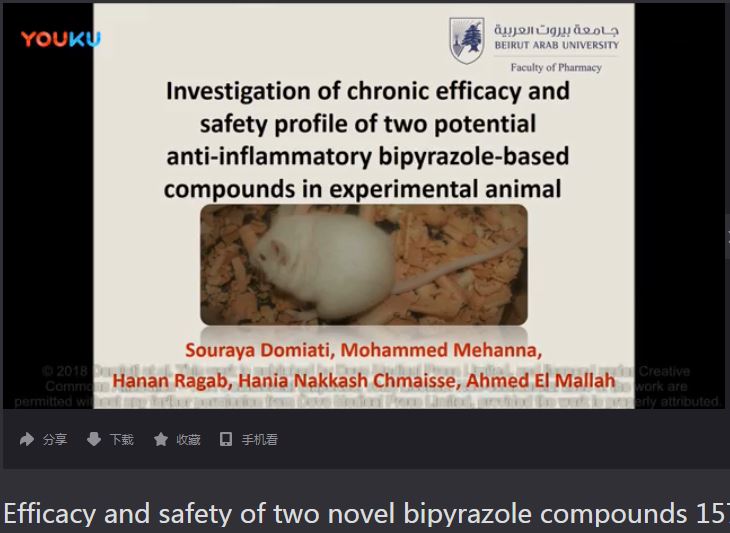108605
论文已发表
注册即可获取德孚的最新动态
IF 收录期刊
- 3.4 Breast Cancer (Dove Med Press)
- 3.2 Clin Epidemiol
- 2.6 Cancer Manag Res
- 2.9 Infect Drug Resist
- 3.7 Clin Interv Aging
- 5.1 Drug Des Dev Ther
- 3.1 Int J Chronic Obstr
- 6.6 Int J Nanomed
- 2.6 Int J Women's Health
- 2.9 Neuropsych Dis Treat
- 2.8 OncoTargets Ther
- 2.0 Patient Prefer Adher
- 2.2 Ther Clin Risk Manag
- 2.5 J Pain Res
- 3.0 Diabet Metab Synd Ob
- 3.2 Psychol Res Behav Ma
- 3.4 Nat Sci Sleep
- 1.8 Pharmgenomics Pers Med
- 2.0 Risk Manag Healthc Policy
- 4.1 J Inflamm Res
- 2.0 Int J Gen Med
- 3.4 J Hepatocell Carcinoma
- 3.0 J Asthma Allergy
- 2.2 Clin Cosmet Investig Dermatol
- 2.4 J Multidiscip Healthc

Investigation of chronic efficacy and safety profile of two potential anti-inflammatory bipyrazole-based compounds in experimental animals
Authors Domiati S, Mehanna M, Ragab H, Nakkash Chmaisse H, El Mallah A
Received 24 November 2017
Accepted for publication 10 January 2018
Published 3 April 2018 Volume 2018:11 Pages 143—153
DOI https://doi.org/10.2147/JIR.S157955
Checked for plagiarism Yes
Review by Single-blind
Peer reviewers approved by Dr Amy Norman
Peer reviewer comments 3
Editor who approved publication: Dr Ning Quan
Purpose: Although nonsteroidal anti-inflammatory drugs are widely used to treat a
variety of disorders, their administration is associated with gastrointestinal
side effects, acute kidney injury and liver enzymes’ elevation. Accordingly,
researchers are encouraged to create novel agents with better safety profile.
The aim of the current study was to evaluate the chronic efficacy and safety
profile of two compounds previously proven to have acceptable acute
anti-inflammatory and analgesic activities.
Materials and methods: Doses were determined through formalin-induced
mice paw edema-based dose–response curves. Granuloma weight was used to assess
the chronic effect of the investigated compounds as compared to the vehicle and
diclofenac representing the positive and the negative controls, respectively.
Mice kidneys, livers and stomachs were histologically examined. Moreover,
troponin I, alanine aminotransferase, aspartate aminotransferase, serum
creatinine and blood urea nitrogen levels were measured.
Results: The results highlight that the granulomas and
exudates developed in mice after 7 days of treatment, with compound I and
compound II were significantly lower than that of the negative control group.
Moreover, compound I showed significantly better anti-inflammatory effect than
diclofenac. Troponin level was undetected in all groups. Histopathological
examination of the stomach revealed normal mucosa for both tested compounds and
controls. Likewise, kidneys showed neither significant histologic alteration
nor biomarkers increase as compared to the control over both 7- and 30-day
treatment periods. Mice that received the tested compounds or diclofenac
exhibited transient liver damage specifically; congestion, vacuolization,
necrosis and inflammation after 7 days of treatment which decreased
significantly after 30 days of treatment as emphasized by the Suzuki score and
biomarker levels.
Conclusion: Since the tested compounds, specifically
compound I, presented a satisfactory chronic safety profile as well as
anti-inflammatory effect, it is worth conducting further molecular
pharmacological, toxicological and bioavailability studies to elucidate the efficacy
of these potential anti-inflammatory bipyrazole compounds.
Keywords: peptic ulcer,
hepatic injury, kidney injury, nonsteroidal anti-inflammatory drugs, pyrazole,
histology
摘要视频链接:Efficacy and safety of two novel bipyrazole compounds
